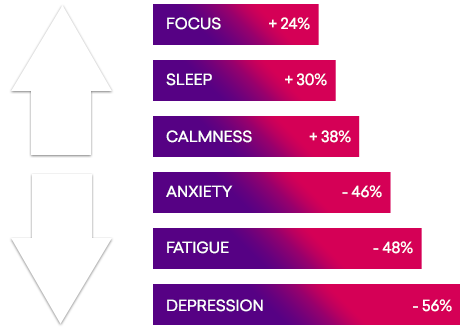Our heart is supposed to beat at a rate that is relative to the activity we’re doing in any given moment, and the demand that we’re putting on our body to get oxygen delivered into our tissue. Most of us are shallow breathers and max out using a very low capacity of our actual breath. This means that, overall, our tissues generally aren’t getting appropriate oxygen delivery relative to their demands.
In order to be able to deliver oxygen appropriately we need to have our breath, respiration, and heart rate in sync. Respiration is independent of the heart beat, but they both have certain rhythms that they’re supposed to run at depending on our level of activity. When the 2 rhythms become coherent, tissue perfusion increases. When this happens we are able to turn off the sympathetic nervous system’s response to stress which allows anxiety to go down, allows us to think more clearly, allows the body becomes more efficient, we essentially become more stress resilient. In this state of breathing we can regulate our PH, our electrical potential via the heart rate and oxygen delivery. You can actually re-regulate the inflammation in your body and your vascular flow via the heart rate in the body. Heart Rate Variability (HRV) is a study and training technique that allows us to do just that.
In a HRV Evaluation your heart rate and breath will be monitored to find the rate of breathing per minute that is idea for your body. The science behind HRV training came largely out of the field of cardiology and has been published for over 40 years. It is a technique that originally came out of Cardiology studies on atrial fibrillation. It was successful in resolving 80-90% of cases and is one of the best tools we have found to help people deal with arrhythmias, along with a variety of other physiological conditions such as elevated stress, high blood pressure, depression, anxiety, hypertension, insomnia, and anger management.
HeartMath research has shown that the process of creating a sustainable emotional shift can be facilitated by shifting heart rhythm into a coherent pattern where both branches of the ANS, the parasympathetic and sympathetic, become synchronized. The coherent pattern is a smooth, ordered pattern in the heart rhythm, similar to a sine wave. Shifting into this coherent pattern causes increased harmony and synchronization in the interactions between the heart and brain (McCrate et al. 2005). Coherence in the heart rhythm pattern arises naturally during deep, restful sleep. Coherence in the heart rhythm while awake promotes a calm, balanced, yet alert and response state of well-being.
90% of anxiety and depression cases are related to poor breathing and oxygen management. When you feel anxious, one of the key things you’re experiencing is a wind up in the limbic center (key region for primal emotions, rage, etc.) of the brain, which slows the frontal lobe (key region of focus, reason, & mood control), inhibiting your ability to self-soothe and make good judgments. This stops you from being able to take deep breaths and causes you to hyperventilate. Doing a Heart Rate Variability study helps our patients to identify their unique breathing and heart rate, and teaches them how to modify and manage their oxygen delivery. This process allows them to literally breathe their way out of stressful situations, and helps to increase tissue perfusion (how well we deliver oxygen into our tissue) which, in turn, feeds and stimulates the brain!
HRV is a tool that, once learned, can be practiced at home on your own at home. When done on a regular basis we’ve seen it have wonderful benefits and absolutely no downside!



